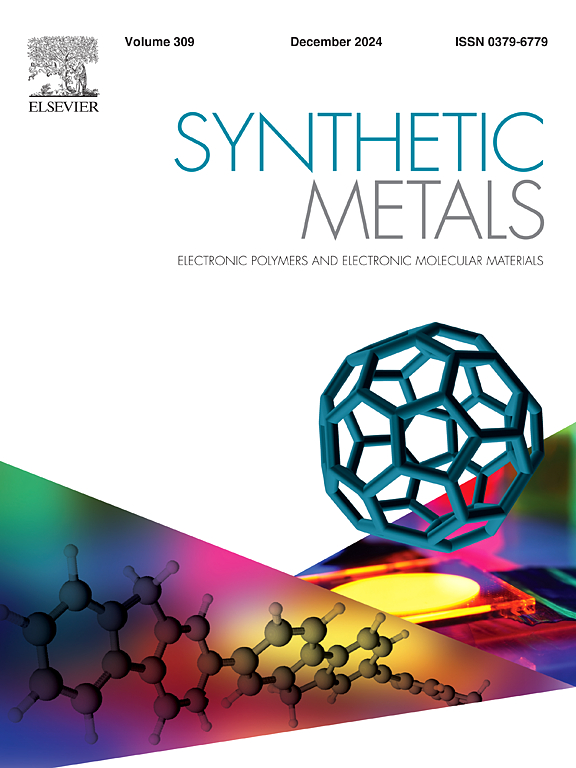蓝色OLED降解的漂移-扩散模型
IF 4.6
3区 材料科学
Q2 MATERIALS SCIENCE, MULTIDISCIPLINARY
引用次数: 0
摘要
蓝色有机发光二极管(oled)的快速降解是显示和照明行业面临的一个持续挑战。双分子激子湮灭反应是这些器件中分子降解的主要原因之一,但到目前为止,主要是通过将数据拟合到简化的速率方程模型来量化,这些模型粗略地近似复合区中的激子和载流子密度,而完全忽略了器件中的其他层。在这里,我们实现了一个严格的基于漂移扩散的退化模型,并将其亮度衰减和电压上升与基于速率的模型进行了比较。我们发现,速率模型预测的亮度衰减在功能上与漂移扩散模拟相似,但在数量上不同,尽管使用湮灭速率系数和热极化子退化概率的有效值可以获得合理的一致性。重要的是,漂移-扩散模型表明,在发射层形成的陷阱状态缺陷只会导致电压的轻微增加,而在输运层形成的陷阱状态缺陷会导致电压的较大增加,这与实验结果相当。这些结果表明,OLED的亮度损失和电压上升在很大程度上分别源于发射层和输运层形成的不同缺陷状态集,并且实验拟合的速率模型退化参数应被视为有效值,而不直接对应器件中实际微尺度过程的速率。本文章由计算机程序翻译,如有差异,请以英文原文为准。
Drift-diffusion modeling of blue OLED degradation
Rapid degradation of blue organic light-emitting diodes (OLEDs) is an ongoing challenge for the display and lighting industry. Bimolecular exciton annihilation reactions are one of the leading causes of molecular degradation in these devices, but are so far quantified mostly by fitting data to simplified rate equation models that crudely approximate the exciton and charge carrier densities in the recombination zone while neglecting the other layers in the device entirely. Here, we implement a rigorous drift-diffusion-based degradation model and compare its luminance fade and voltage rise to that of a corresponding rate-based model for a prototypical exciton-polaron-based degradation scenario. We find that the luminance fade predicted by the rate model yields functionally similar, but quantitatively different results than the drift-diffusion simulation, though reasonable agreement can be achieved by using effective values for the annihilation rate coefficient and hot polaron degradation probability. Importantly, the drift-diffusion model indicates that trap state defects formed in the emissive layer lead to only a minor increase in voltage, whereas those formed in the transport layers lead to a larger increase that is on par with experiment. These results suggest that OLED luminance loss and voltage rise largely originate from different sets of defect states formed in the emissive and transport layers, respectively, and that rate model degradation parameters fit from experiment should be viewed as effective values that do not directly correspond to the rate of the actual microscale processes occurring in the device.
求助全文
通过发布文献求助,成功后即可免费获取论文全文。
去求助
来源期刊

Synthetic Metals
工程技术-材料科学:综合
CiteScore
8.30
自引率
4.50%
发文量
189
审稿时长
33 days
期刊介绍:
This journal is an international medium for the rapid publication of original research papers, short communications and subject reviews dealing with research on and applications of electronic polymers and electronic molecular materials including novel carbon architectures. These functional materials have the properties of metals, semiconductors or magnets and are distinguishable from elemental and alloy/binary metals, semiconductors and magnets.
 求助内容:
求助内容: 应助结果提醒方式:
应助结果提醒方式:


